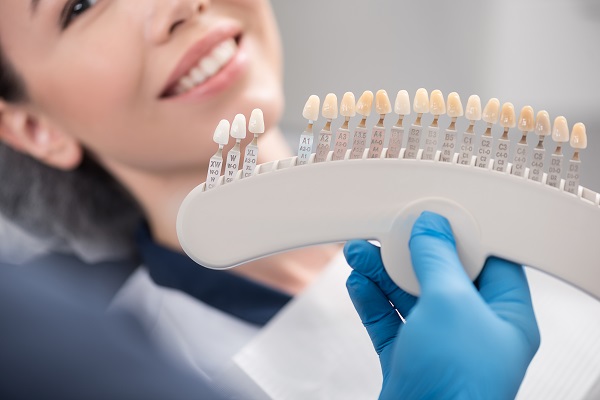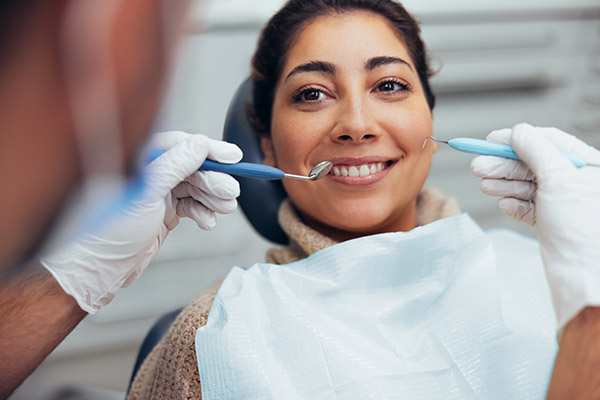Prepping Your Teeth for Dental Veneers

Dental veneers are thin shells that are used to cover the front surface of teeth. Veneers are bonded to teeth to change their shape, length, color or size. They are designed to enhance or change the appearance of damaged or undesired teeth. You should consider getting dental veneers if you want to improve your appearance.
Dental veneers procedure
Dental veneers can be used to fix many types of problems. Dentists usually recommend them for teeth that are worn down, chipped, broken, discolored, misaligned, irregularly shaped or uneven. Veneers can also be used to fix teeth with spaces between them. To get a veneer, a person usually needs to visit a dentist several times. Here is what a person can expect during the prepping of teeth for veneers.
Prepping the teeth
Veneers may require the prepping or shaping of the teeth being treated. The amount of prep work required will mainly depend on the type of veneer chosen, the position of the teeth and the method a dentist prefers to use to prepare a tooth. Prior to trimming off the enamel, the dentist and patient will decide if a local anesthetic is needed to numb the area. Teeth that require minimal preparation or that have been root canaled may allow a patient to avoid the need for anesthetic. To prepare the tooth, a dentist will reshape the surface of the tooth, which is an amount that is almost equal to the thickness of the dental veneer that is to be added to the surface of the tooth.
The dentist will take an impression or model of the tooth. The dentist may use an impression material, which starts out as a thick paste. This material is filled into a tray and then placed in the mouth. The dental assistant will most probably hold the impression tray in the mouth for a couple of minutes until the material sets.
An impression of how a patient’s teeth bite together will also be taken. The impression material will be applied to the biting surface of the top and bottom teeth. A patient will be required to bite down into the material for some minutes just until the material sets. If all the impressions are good, they will then be delivered to the dental laboratory. The veneers will be constructed in the lab. It often takes a few weeks for the dentist to get the veneers back.
Bonding
Before a veneer is cemented permanently to the tooth, the dentist will have to examine its color and fit and if necessary make adjustments. To prepare the tooth for the veneer, it will have to be cleaned, polished and etched. The veneer will then be placed on the tooth. A person may have to visit a dentist again for a follow-up after some weeks.
Takeaway
Dental veneers can help solve most of your cosmetic dental issues. The procedure of getting dental veneers involves preparing the teeth. A veneer requires the removal of the tooth’s enamel surface. Your dentist will then take an impression of your tooth and send it to the lab. After receiving the veneer from the lab, it will be cemented permanently to your tooth. If you need to learn more about the dental veneer procedure, talk to your dentist.
Are you considering getting dental veneers in the Lilburn area? Get more information at https://www.lilburnfamilydentistry.com.
Check out what others are saying about our services on Yelp: Read our Yelp reviews.
Recent Posts
A good restorative dentist can treat dental chipping right away. This type of dental injury can result from biting hard foods. It can also be due to falls, accidents, fights, and sports injuries. Here are the details on how your restorative dentist can rebuild your chipped teeth.This is a quick way to restore a chipped…
Restorative and cosmetic dentistry are dental disciplines that offer similar services. However, they serve distinct purposes and treatment goals. Understanding the differences between a restorative dentist and a cosmetic dentist can help you make informed decisions about your dental care.Restorative dentistry is a dental specialty that focuses primarily on repairing or replacing damaged or missing…
Dental implants are a permanent, functional solution for patients with tooth loss in one or both dental arches. Both partial and full arch dental implants have become more accessible, customizable, and successful for a wide range of patients. However, they have different uses and candidacy requirements. Understanding the differences between these options helps clarify which…
Proper dental care can involve more than checkups every six months. When the teeth sustain damage from tooth decay or mouth injuries, a restorative dentist will "restore" the smile to its full functionality. The benefits of consulting a restorative dentist do not stop there. These dental professionals can help relieve pain and improve oral health…


